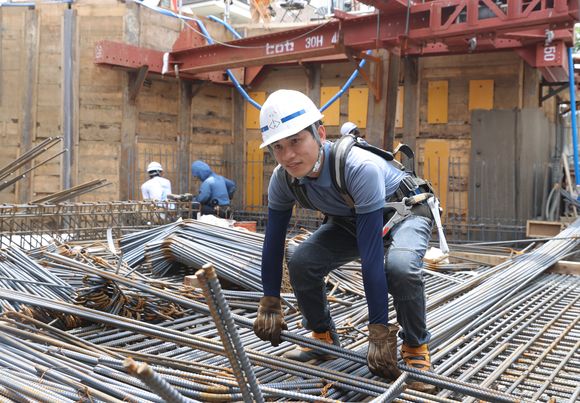According to statistics from Japan’s Ministry of Justice, the number of foreign residents in Japan reached a record high of 3.07 million by the end of 2022, surpassing 3 million for the first time. With a variety of residency statuses, most of these residents contribute to the Japanese labour market.
Among this foreign labour force, 325,000 ‘technical intern trainees’ and 131,000 ‘specified skilled workers’ play a significant role in supporting the Japanese economy. Both statuses are based on the premise of working while learning a skill, but it has been argued that these workers are used as cheap migrant labour with little support provided for training. They work in industries where labour is in short supply such as food and beverage manufacturing, sewing, construction, cleaning and agriculture. Japanese society depends on 450,000 foreign workers to do the work that Japanese workers do not want to do.
Vietnam is the largest source of this migrant labour, accounting for 54 per cent of technical intern trainees and 59 per cent of specified skilled workers. Over the past decade, the number of Vietnamese residents — not only migrant workers — increased nearly tenfold to 490,000.
Vietnam was expected to continue to be the largest source of migrant workers in Japan. But the tide has turned with the rapid depreciation of the Japanese yen, which reached a 32-year low of 150 yen to the US dollar in October 2022. The depreciation of the yen against the Vietnamese dong has also accelerated, and the salaries that Vietnamese migrant workers receive have decreased by at least 10–20 per cent. Nguyen Thuy Linh, President of Himawari Service, a human resource service company in Hanoi, said: ‘since the yen’s depreciation, it has become difficult to recruit migrant workers to Japan’.
But for some Vietnamese workers, whose average monthly wages are currently around US$200–300, Japan — where wages have not increased for 30 years — is still an attractive option. Based on average wages announced by Vietnam’s General Statistics Office and the average wages for technical intern trainees and specified skilled workers announced by Japan’s Ministry of Health, Labor and Welfare, the wage gap between Japanese and Vietnamese salaries can be expected to decrease further.
In 2021, the average monthly wage for specified skilled workers in Japan was 9.7 times higher than in Vietnam, while for technical intern trainees it was 8.2 times higher. But by 2025, the average monthly wage for specified skilled workers and technical intern trainees will fall to 5.9 times and 5.1 times, respectively. And in 2031, the average monthly wage for specified skilled workers and technical intern trainees will fall to 3.4 times and 3 times respectively, nearly one-third of the current level.
It is likely that 2031 will mark a turning point, when Vietnamese workers will no longer see Japan as an attractive source of income. The costs associated with migration will no longer be worthwhile as salaries in Japan will only be about three times the local salary. Living in Japan is also costly — about four times higher than in Vietnam, as of 2023. Migrant workers’ average monthly salary is around 180,000 yen (about US$1250) but 40 to 50 per cent is taken up by costs of dormitory fees, taxes, social insurance and other deductions.
Specific measures must be taken to ensure the continued flow of migrant labour essential to supporting Japan’s economy. The first is to eliminate brokers. Vietnamese migrant workers to Japan borrow about 1 million yen from brokers to pay for travel expenses. That figure is higher than the amount paid by migrant workers from other countries like Indonesia or the Philippines.
Japan would do well to follow South Korea’s lead where an employment permit system was implemented in 2006. This eliminates brokers and is directly administered by South Korea’s Ministry of Employment and Labor. South Korea has not only eliminated brokers but also allows migrant workers to change jobs in the same industry under certain conditions.
The second improvement is to recognise technical intern trainees and specified skilled workers officially as ‘migrant workers’. This may provide improved outcomes and treatment for migrants whose status as ‘trainees’ may lead employers to abuse their own superior status and force them to work for lower wages.
The third measure relates to skills capacity among migrant workers after they return home. For technical intern trainees and specified skilled workers, the focus is on having them work in Japan, not on how they will use the knowledge and skills they have acquired after returning to their home countries. Except for a few willing companies, there is almost no assistance provided for job placement or further development when a worker returns to their home country.
If workers who learned skills and knowledge in Japan can be hired in local factories, and if the Japanese and Vietnamese governments jointly create a national qualification that is accepted in Vietnam, the lives of workers after returning home would be significantly improved. Even if wages are a little lower than in other countries, the number of Vietnamese people who want to study technology in Japan will increase if the conditions are more enticing.
Atsushi Tomiyama is Principal Economist at the Japan Center for Economic Research and Lecturer at Tama University.
This article appears in the most recent edition of East Asia Forum Quarterly, ‘Re-defining the ASEAN–Japan Relationship’, Vol 15, No 3.

